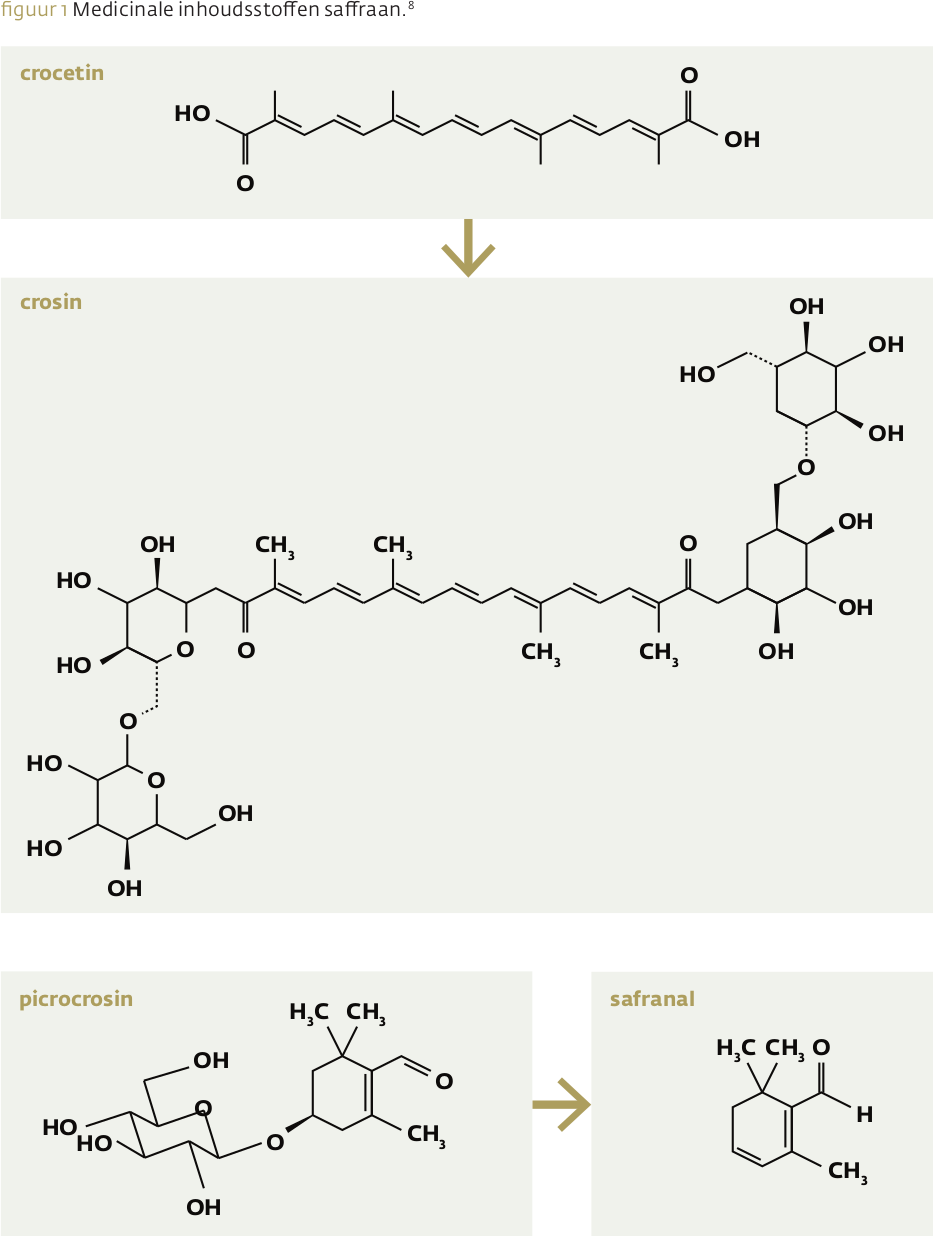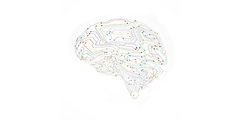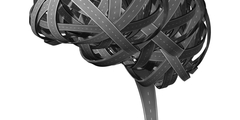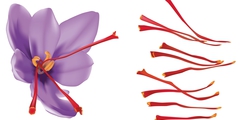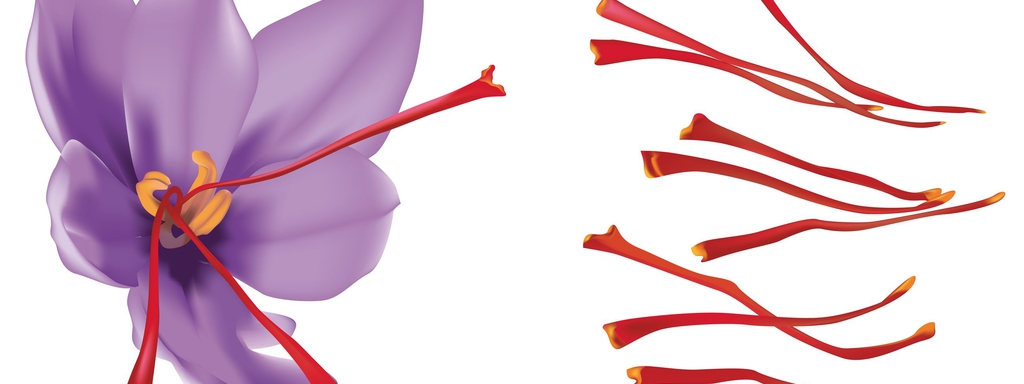
Saffraan, ook wel ‘het rode goud’ genoemd, bestaat uit de gedroogde, oranjerode stampers (stigma) van de saffraancrocus (Crocus sativus). Al meer dan 4000 jaar wordt saffraan gebruikt als kleurstof, specerij en geneesmiddel. Tegenwoordig zijn er voedingssupplementen met saffraan(extract) verkrijgbaar, die onder meer worden ingezet bij depressie, de ziekte van Alzheimer, leeftijdsgerelateerde maculadegeneratie en impotentie.
Beste bezoeker, u heeft geen toegang.
Enkel (web)abonnees hebben toegang tot tijdschriftartikelen. Het webabonnement is nog in de maak.
U kunt zich wel alvast (gratis) registreren en tal van andere webartikelen raadplegen!
Auteur
Verschenen in
Referenties
Melnyk JP et al. Chemical and biological properties of the world’s most expensive spice: Saffron. Food Res Int. 2010;43:1981-1989.
Dovrtělová G et al. Can bioactive compounds of Crocus sativus L. influence the metabolic activity of selected CYP enzymes in the rat? Physiol Res. 2015;64(S4):S453-8.
Papandreou MA et al. Inhibitory activity on amyloid-beta aggregation and antioxidant properties of Crocus sativus stigmas extract and its crocin constituents. J Agric Food Chem. 2006;15:8762-8768.
Pitsikas N. The effect of Crocus sativus L. and its constituents on memory: basic studies and clinical applications. Evid Based Complement Alternat Med. 2015;2015:926284.
Poma A et al. Anti-inflammatory properties of drugs from saffron crocus. Antiinflamm Antiallergy Agents Med Chem. 2012;11:37-51.
Kashani L et al. Comparison of saffron versus fluoxetine in treatment of mild to moderate postpartum depression: a double-blind, randomized clinical trial. Pharmacopsychiatry. 2016 Sep 5.
Lopresti AL et al. Efficacy of curcumin, and a saffron/curcumin combination for the treatment of major depression: A randomised, double-blind, placebo-controlled study. J Affect Disord. 2017;207:188-196.
Lopresti AL et al. Saffron (Crocus sativus) for depression: a systematic review of clinical studies and examination of underlying antidepressant mechanisms of action. Hum. Psychopharmacol Clin Exp 2014;29:5170-527.
Rahaiee S et al. Evaluation of antioxidant activities of bioactive compounds and various extracts obtained from saffron (Crocus sativus L.): a review. J Food Sci Technol. 2015;52(4):1881-8.
Ochiai T et al. Crocin prevents the death of rat pheochromyctoma (PC-12) cells by its antioxidant effects stronger than those of alpha-tocopherol. Neurosci Lett. 2004;362(1):61-4.
Asdaq SM et al. Potential of Crocus sativus (saffron) and its constituent, crocin, as hypolipidemic and antioxidant in rats. Appl Biochem Biotechnol. 2010;162:358-372.
Assimopoulou AN et al. Radical scavenging activity of Crocus sativus L., extracts and its bioactive constituents. Phytother Res. 2005;19:997-1000.
Verma SK et al. Antioxidant property of Saffron in man. Indian J Med Sci. 1998;52(5):205-7.
Hosseinzadeh H et al. Crocus sativus L (saffron) extract and its active constituents (crocin and safranal) on ischemia-reperfusion in rat skeletal muscle. Evidence-Based Complement Alternat Med. 2009;6:343-350.
Mahmoudzadeh L et al. Anti-inflammatory and protective effects of saffron extract in ischaemia-reperfusion induced acute kidney injury. Nephrology (Carlton). 2016 Jul 5.
Mard SA et al. A preliminary study of the anti-inflammatory and anti-apoptotic effects of crocin against gastric ischemia-reperfusion injury in rats. Braz J Pharm Sci. 2015;51(3):637-624.
Mehdizadeh R et al. Cardioprotective effect of saffron extract and safranal in isoproterenol-induced myocardial infarction in wistar rats. Iran J Basic Med Sci. 2013;16(1):56-63.
Bani S et al. Selective Th2 upregulation by Crocus sativus: a neutraceutical spice. Evid Based Complement Alternat Med. 2011;2011.
Boskabady MH et al. The effect of safranal, a constituent of Crocus sativus (saffron), on tracheal responsiveness, serum levels of cytokines, total NO and nitrite in sensitized guinea pigs. Pharmacol Rep. 2014;66(1):56-61.
Hosseinzadeh H et al. Antinociceptive and anti-inflammatory effects of Crocus sativus L. stigma and petal extracts in mice. BMC Pharmacol. 2002;2:7.
Ochiai T et al. Protective effects of carotenoids from saffron on neuronal injury in vitro and in vivo. Biochim Biophys Acta 2007;1770:578-84.
Erfanparast A et al. Effects of crocin and safranal, saffron constituents, on the formalin-induced orofacial pain in rats. Avicenna J Phytomed. 2015;5(5):392-402.
Meamarbashi A et al. Preventive effects of 10-day supplementation with saffron and indomethacin on the delayed-onset muscle soreness. Clin J Sport Med. 2015;25(2):105-12.
Karimi G et al. Study of antidepressant effect of aqueous and ethanolic of Crocus sativus in mice. Iranian J Basic Med Sci. 2001;4:11-15.
Hausenblas HA et al. Saffron (Crocus sativus L.) and major depressive disorder: a meta-analysis of randomized clinical trials. J Integr Med. 2013;11(6):377-83.
Ghasemi T et al. Antidepressant effect of Crocus sativus aqueous extract and its effect on CREB, BDNF, and VGF transcript and protein levels in rat hippocampus. Drug Res (Stuttg). 2015;65(7):337-43.
Szafrański T. Herbal remedies in depression - state of the art. Psychiatr Pol. 2014;48(1):59-73.
Möhler H. The GABA system in anxiety and depression and its therapeutic potential. Neuropharmacology. 2012;62(1):42-53.
Dwyer AV et al. Herbal medicines, other than St. John's Wort, in the treatment of depression: a systematic review. Altern Med Rev. 2011;16(1):40-9.
Akhondzadeh Basti A et al. Comparison of petal of Crocus sativus L. and fluoxetine in the treatment of depressed outpatients: a pilot double-blind randomized trial. Prog Neuropsychopharmacol Biol Psychiatry. 2007;31(2):439-42.
Moshiri E et al. Crocus sativus L. (petal) in the treatment of mild-to-moderate depression: a double-blind, randomized and placebo-controlled trial. Phytomedicine. 2006;13(9-10):607-11.
Hosseinzadeh H et al. Anxiolytic and hypnotic effect of Crocus sativus aqueous extract and its constituents, crocin and safranal, in mice. Phytother Res. 2009;23(6):768-74.
Pitsikas N et al. Effects of the active constituents of Crocus sativus L., crocins, in an animal model of anxiety. Phytomedicine. 2008;15(12):1135-9.
Georgiadou G et al. Effects of the active constituents of Crocus Sativus L., crocins, in an animal model of obsessive-compulsive disorder. Neurosci Lett. 2012;528(1):27-30.
Hosseinzadeh H et al. The effect of saffron, Crocus sativus stigma, extract and its constituents, safranal and crocin on sexual behaviors in normal male rats. Phytomedicine. 2008;15(6-7):491-5.
Mohammadzadeh-Moghadam H et al. Effects of a topical saffron (Crocus sativus L) gel on erectile dysfunction in diabetics: a randomized, parallel-group, double-blind, placebo-controlled trial. J Evid Based Complementary Altern Med. 2015;20(4):283-6.
Pitsikas N et al. Effects of the active constituents of Crocus sativus L., crocins on recognition and spatial rats' memory. Behav Brain Res. 2007;183(2):141-6.
Ghadrdoost B et al. Protective effects of saffron extract and its active constituent crocin against oxidative stress and spatial learning and memory deficits induced by chronic stress in rats. Eur J Pharmacol. 2011;667(1-3):222-9.
Akhondzadeh S et al. A 22-week, multicenter, randomized, double-blind controlled trial of Crocus sativus in the treatment of mild-to-moderate Alzheimer's disease. Psychopharmacology (Berl). 2010;207(4):637-43.
Farokhnia M et al. Comparing the efficacy and safety of Crocus sativus L. with memantine in patients with moderate to severe Alzheimer’s disease: a double-blind randomized clinical trial. Hum. Psychopharmacol Clin Exp. 2014;29:351-359.
Abe K et al. Effects of saffron extract and its constituent crocin on learning behaviour and long-term potentiation. Phytother Res. 2000;14:149-152.
Zhang Y et al. Effects of Crocus sativus L. on the ethanol-induced impairment of passive avoidance performances in mice. Biol Pharm Bull. 1994;17(2):217-21.
Tashakori-Sabzevar F et al. Crocetin attenuates spatial learning dysfunction and hippocampal injury in a model of vascular dementia. Curr Neurovasc Res. 2013;10(4):325-34.
Hosseinzadeh H et al. Effects of saffron (Crocus sativus L.) and its active constituent, crocin, on recognition and spatial memory after chronic cerebral hypoperfusion in rats. Phytother. Res. 2012;26:381-386.
Khalili M et al. Effects of active constituents of Crocus sativus L., crocin on streptozocin-induced model of sporadic Alzheimer's disease in male rats. Iran Biomed J. 2010;14(1-2):59-65.
Khazdair MR et al. The effects of Crocus sativus (saffron) and its constituents on nervous system: A review. Avicenna J Phytomed. 2015;5(5):376-391.
Ohno Y et al. Oral administration of crocetin prevents inner retinal damage induced by N-methyl-D-aspartate in mice. Eur J Pharmacol. 2012;690(1-3):84-9.
Akhondzadeh S et al. Saffron in the treatment of patients with mild to moderate Alzheimer's disease: a 16-week, randomized and placebo-controlled trial. J Clin Pharm Ther. 2010;35(5):581-8.
Ahn JH et al. Crocetin inhibits beta-amyloid fibrillization and stabilizes beta-amyloid oligomers. Biochem Biophys Res Commun. 2011;414(1):79-83.
Karakani AM et al. Inhibitory effect of crocin on aggregation of 1N/4R human tau protein in vitro. Iran J Basic Med Sci. 2015;18(5):485-92.
Asadi F et al. Reversal effects of crocin on amyloid β-induced memory deficit: Modification of autophagy or apoptosis markers. Pharmacol Biochem Behav. 2015;139(Pt A):47-58.
Revett TJ et al. Glutamate system, amyloid ß peptides and tau protein: functional interrelationships and relevance to Alzheimer disease pathology. J Psychiatry Neurosci. 2013;38(1):6-23.
Berger F et al. Saffron extract and trans-crocetin inhibit glutamatergic synaptic transmission in rat cortical brain slices. Neuroscience. 2011;180:238-47.
Georgiadou G et al. Crocins, the active constituents of Crocus Sativus L., counteracted ketamine-induced behavioural deficits in rats. Psychopharmacology (Berl). 2014;231(4):717-26.
Geromichalos GD et al. Saffron as a source of novel acetylcholinesterase inhibitors: molecular docking and in vitro enzymatic studies. J Agric Food Chem. 2012;60(24):6131-8.
Hosseinzadeh H et al. Protective effect of safranal on pentylenetetrazol-induced seizures in the rat: involvement of GABAergic and opioids systems. Phytomedicine. 2007;14(4):256-62.
Skladnev NV et al. Widespread brain transcriptome alterations underlie the neuroprotective actions of dietary saffron. J Neurochem. 2016;139(5):858-871.
Calabrese V et al. Cellular stress responses, hormetic phytochemicals and vitagenes in aging and longevity. Biochimica et Biophysica Acta 2012;1822:753-783.
Laabich A et al. Protective effect of crocin against blue light- and white light-mediated photoreceptor cell death in bovine and primate retinal primary cell culture. Invest Ophthalmol Vis Sci. 2006;47:3156-3163.
Maccarone R et al. Saffron supplement maintains morphology and function after exposure to damaging light in mammalian retina. Invest Ophthalmol Vis Sci. 2008;49:1254-1261.
Lv B et al. Crocin protects retinal ganglion cells against H2O2-induced damage through the mitochondrial pathway and activation of NF-κB. Int J Mol Med. 2016;37(1):225-32.
Maccarone R et al. Modulation of type-1 and type-2 cannabinoid receptors by saffron in a rat model of retinal neurodegeneration. PLoS One. 2016;11(11):e0166827.
Bahmani F et al. Inhibitory effect of crocin(s) on lens alpha-crystallin glycation and aggregation, results in the decrease of the risk of diabetic cataract. Molecules 2016;21:143.
Christodoulou E et al. Saffron: a natural product with potential pharmaceutical applications. J Pharm Pharmacol. 2015;67(12):1634-49.
Ding J et al. Crocetin activates Foxp3 through TIPE2 in asthma-associated Treg cells. Cell Physiol Biochem. 2015;37(6):2425-33.
Mahmoudabady M et al. Hydroalcoholic extract of Crocus sativus effects on bronchial inflammatory cells in ovalbumin sensitized rats. Avicenna J Phytomed. 2013;3(4):356-63.
Mokhtari-Zaer A et al. Smooth muscle relaxant activity of Crocus sativus (saffron) and its constituents: possible mechanisms. Avicenna J Phytomed. 2015;5(5):365-75.
Razavi BM et al. Saffron: a promising natural medicine in the treatment of metabolic syndrome. J Sci Food Agric. 2016 Nov 12.
Farshid AA et al. The effects of crocin, insulin and their co-administration on the heart function and pathology in streptozotocin-induced diabetic rats. Avicenna J Phytomed. 2016;6(6):658-670.
Samarghandian S et al. Ameliorative effect of saffron aqueous extract on hyperglycemia, hyperlipidemia, and oxidative stress on diabetic encephalopathy in streptozotocin induced experimental diabetes mellitus. Biomed Res Int. 2014;2014:920857.
Hazman Ö et al. Anti-inflammatory and antioxidative activities of safranal in the reduction of renal dysfunction and damage that occur in diabetic nephropathy. Inflammation. 2015;38(4):1537-45.
Farshid AA et al. Histopathological and behavioral evaluations of the effects of crocin, safranal and insulin on diabetic peripheral neuropathy in rats. Avicenna J Phytomed. 2015;5(5):469-78.
Mashmoul M et al. Protective effects of saffron extract and crocin supplementation on fatty liver tissue of high-fat diet-induced obese rats. BMC Complement Altern Med. 2016;16(1):401.
Shemshian M et al. Saffron in metabolic syndrome: its effects on antibody titers to heat-shock proteins 27, 60, 65 and 70. J Complement Integr Med. 2014;11(1):43-9.
Kilic A et al. Heat shock proteins: pathogenic role in atherosclerosis and potential therapeutic implications. Autoimmune Dis. 2012;2012:502813.
Mashmoul M et al. Saffron: A natural potent antioxidant as a promising anti-obesity drug. Antioxidants (Basel). 2013;2(4):293-308.
Sheng L et al. Sheng L et al. Mechanism of hypolipidemic effect of crocin in rats: crocin inhibits pancreatic lipase. Eur J Pharmacol. 2006;543(1-3):116-22.
Gout B et al. Satiereal, a Crocus sativus L. extract, reduces snacking and increases satiety in a randomized placebo-controlled study of mildly overweight, healthy women. Nutr Res. 2010;30:305–313.
Mohajeri D et al. Anti-diabetic activity of Crocus sativus L. (saffron) stigma ethanolic extract in alloxan-induced diabetic rats. Res J Biol Sci. 2008;3(9):1102-1108.
Samarghandian S et al. Safranal treatment improves hyperglycemia, hyperlipidemia and oxidative stress in streptozotocin-induced diabetic rats. J Pharm Pharm Sci. 2013;16(2):352-62.
Shirali S et al. Effect of crocin on the insulin resistance and lipid profile of streptozotocin-induced diabetic rats. Phytother Res. 2013;27(7):1042-7.
Imenshahidi M et al. Hypotensive effect of aqueous saffron extract (Crocus sativus L.) and its constituents, safranal and crocin, in normotensive and hypertensive rats. Phytother Res. 2010;24(7):990-4.
Imenshahidi M et al. The effect of chronic administration of saffron (Crocus sativus) stigma aqueous extract on systolic blood pressure in rats. Jundishapur J Nat Pharm Prod. 2013;8:175-179.
Modaghegh MH et al. Safety evaluation of saffron (Crocus sativus) tablets in healthy volunteers. Phytomedicine. 2008;15(12):1032-7.
Kamalipour M et al. Cardiovascular effects of saffron: an evidence-based review. J Tehran Heart Cent. 2011;6(2):59-61.
Joukar S et al. Protective effects of saffron (Crocus sativus) against lethal ventricular arrhythmias induced by heart reperfusion in rat: a potential anti-arrhythmic agent. Pharm Biol. 2013;51(7):836-43.
Burut DF et al. Serum heat shock protein 27 antigen and antibody levels appear to be related to the macrovascular complications associated with insulin resistance: a pilot study. Cell Stress Chaperones. 2010;15(4):379-86.
Nair SC et al. Antitumour activity of saffron (Crocus sativus). Cancer Lett. 1991;57(2):109-14.
Salomi MJ et al. Inhibitory effects of Nigella sativa and saffron (Crocus sativus) on chemical carcinogenesis in mice. Nutr Cancer. 1991;16(1):67-72.
Nair SC et al. Saffron chemoprevention in biology and medicine: a review. Cancer Biother. 1995;10(4):257-64.
Abdullaev FI. Cancer chemopreventive and tumoricidal properties of saffron (Crocus sativus L.). Exp Biol Med (Maywood). 2002;227(1):20-5.
Bathaie SZ et al. Anticancer effects of crocetin in both human adenocarcinoma gastric cancer cells and rat model of gastric cancer. Biochem Cell Biol. 2013;91(6):397-403.
Samarghandian S et al. Anticarcinogenic effect of saffron (Crocus sativus L.) and its ingredients. Pharmacognosy Res. 2014;6(2):99-107.
Festuccia C et al. Antitumor effects of saffron-derived carotenoids in prostate cancer cell models. Biomed Res Int. 2014;2014:135048.
Bolhassani A et al. Saffron and natural carotenoids: Biochemical activities and anti-tumor effects. Biochim Biophys Acta. 2014;1845(1):20-30.
Bhandari PR. Crocus sativus L. (saffron) for cancer chemoprevention: A mini review. J Tradit Complement Med. 2015;5(2):81-7.
Hosseini A et al. Effect of saffron on liver metastases in patients suffering from cancers with liver metastases: A randomized, double blind, placebo-controlled clinical trial. Avicenna J Phytomed. 2015;5(5):434-40.
Tavakkol-Afshari J et al. Study of cytotoxic and apoptogenic properties of saffron extract in human cancer cell lines. Food Chem Toxicol. 2008;46(11):3443-7.
Abdullaev FI et al. Biomedical properties of saffron and its potential use in cancer therapy and chemoprevention trials. Cancer Detect Prev. 2004;28(6):426-32.
Akhondzadeh S et al. Crocus sativus L. in the treatment of mild to moderate depression: a double-blind, randomized and placebo-controlled trial. Phytother Res. 2005;19(2):148-51.
Noorbala AA et al. Hydro-alcoholic extract of Crocus sativus L. versus fluoxetine in the treatment of mild to moderate depression: a double-blind, randomized pilot trial. J Ethnopharmacol. 2005;97(2):281-4.
Shahmansouri N et al. A randomized, double-blind, clinical trial comparing the efficacy and safety of Crocus sativus L. with fluoxetine for improving mild to moderate depression in post percutaneous coronary intervention patients. J Affect Disord. 2014;155:216-22.
Akhondzadeh S et al. Comparison of Crocus sativus L. and imipramine in the treatment of mild to moderate depression: a pilot double-blind randomized trial. BMC Complement Altern Med. 2004;4:12.
Ghajar A et al. Crocus sativus L. versus citalopram in the treatment of major depressive disorder with anxious distress: a double-blind, controlled clinical trial. Pharmacopsychiatry. 2016 Oct 4.
Falsini B et al. Influence of saffron supplementation on retinal flicker sensitivity in early age-related macular degeneration. Invest Ophthalmol Vis Sci. 2010;51:6118-6124.
Piccardi M et al. A longitudinal follow-up study of saffron supplementation in early age-related macular degeneration: sustained benefits to central retinal function. Evid Based Complement Alternat Med. 2012;2012:429124.
Marangoni D et al. Functional effect of Saffron supplementation and risk genotypes in early age-related macular degeneration: a preliminary report. J Transl Med. 2013;11:228.
Klein ML et al. CFH and LOC387715/ARMS2 genotypes and treatment with antioxidants and zinc for age-related macular degeneration. Ophthalmology 2008;115:1019-1025.
Shamsa A et al. Evaluation of Crocus sativus L. (saffron) on male erectile dysfunction: a pilot study. Phytomedicine. 2009;16(8):690-3.
Modabbernia A et al. Effect of saffron on fluoxetine-induced sexual impairment in men: randomized double-blind placebo-controlled trial. Psychopharmacology (Berl). 2012;223(4):381-8.
Heidary M et al. Effect of saffron on semen parameters of infertile men. Urol J. 2008;5(4):255-9.
Kashani L et al. Saffron for treatment of fluoxetine-induced sexual dysfunction in women: randomized double-blind placebo-controlled study. Hum Psychopharmacol. 2013;28(1):54-60.
Hosseinzadeh H et al. Avicenna’s (Ibn Sina) the Canon of Medicine and saffron (Crocus sativus): a review. Phytother Res. 2013;27:475-483.
Mohamadpour AH et al. Safety evaluation of crocin (a constituent of saffron) tablets in healthy volunteers. Iran J Basic Med Sci. 2013;16(1):39-46.
Mousavi B et al. Safety evaluation of saffron stigma (Crocus sativus L.) aqueous extract and crocin in patients with schizophrenia. Avicenna J Phytomed. 2015;5(5):413-9.
Hosseinzadeh H et al. Effect of Crocus sativus L. (saffron) stigma and its constituents, crocin and safranal, on morphine withdrawal syndrome in mice. Phytother Res. 2010;24(5):726-30.
Lari P et al. Evaluation of diazinon-induced hepatotoxicity and protective effects of crocin. Toxicol Ind Health. 2015;31(4):367-76.
Razavi BM et al. Protective effect of crocin on diazinon induced vascular toxicity in subchronic exposure in rat aorta ex-vivo. Drug Chem Toxicol. 2014;37(4):378-83.
Razavi BM et al. Protective effect of crocin on diazinon induced cardiotoxicity in rats in subchronic exposure. Chem Biol Interact. 2013;203(3):547-55.
Hariri AT et al. The effect of crocin and safranal, constituents of saffron, against subacute effect of diazinon on hematological and genotoxicity indices in rats. Phytomedicine. 2011;18(6):499-504.
Premkumar K et al. Inhibition of genotoxicity by saffron (Crocus sativus L.) in mice. Drug Chem Toxicol. 2001;24(4):421-8.
Dorri SA et al. Involvement of brain-derived neurotrophic factor (BDNF) on malathion induced depressive-like behavior in subacute exposure and protective effects of crocin. Iran J Basic Med Sci. 2015;18(10):958-66.
Linardaki ZI et al. Investigation of the neuroprotective action of saffron (Crocus sativus L.) in aluminum-exposed adult mice through behavioral and neurobiochemical assessment. Food Chem Toxicol. 2013;52:163-70.
Shati AA et al. Role of saffron (Crocus sativus L.) and honey syrup on aluminum-induced hepatotoxicity. Saudi Med J. 2010;31(10):1106-13.
Ajami M et al. Effect of crocus sativus on gentamicin induced nephrotoxicity. Biol Res. 2010;43(1):83-90.
Yang L et al. Involvement of Ca2+ in the inhibition by crocetin of platelet activity and thrombosis formation. J Agric Food Chem. 2008;56:9429-9433.
Agha-Hosseini M A et al. Crocus sativus L. (saffron) in the treatment of premenstrual syndrome: a double-blind, randomised and placebo-controlled trial. Br J Obstet Gynaecol. 2008;115:515-519.
Amin B et al. Evaluation of aqueous and ethanolic extracts of saffron, Crocus sativus L., and its constituents, safranal and crocin in allodynia and hyperalgesia induced by chronic constriction injury model of neuropathic pain in rats. Fitoterapia 2012;83:888-895.

